Original air date: 23 December 1993
The scientific history of the Antarctic and present day’s & camerawork in the series
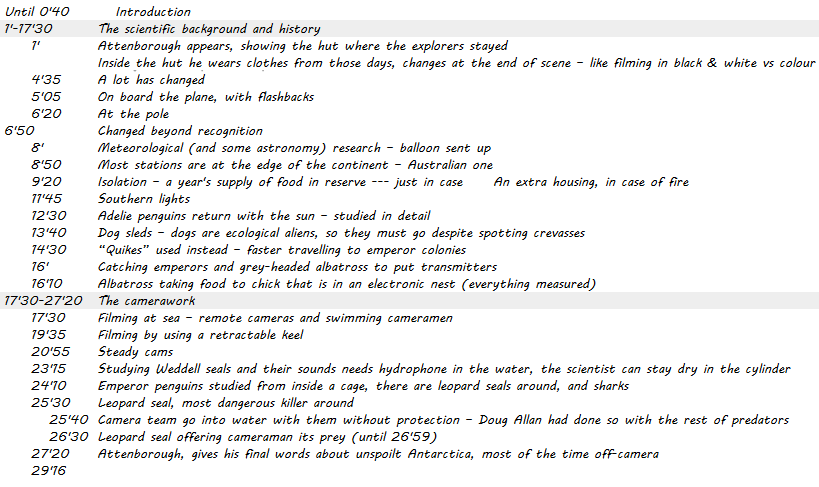
A detailed view at a timeline of the episode
Selected sequences
Some of the ingenious methods used to follow the scientific progress nowadays (in the 1990s)
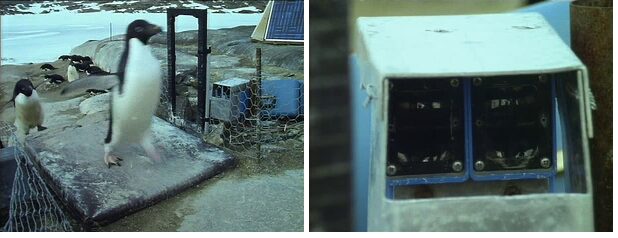
On the way from the breeding grounds to the sea some of the penguins step onto a platform that has an automatic scale underneath it (12’43). One obvious problem is that this individual could be any of the penguins – they are all identical to us. More detailed measurements are sometimes needed, not included in these images as they are used by scientists everywhere.
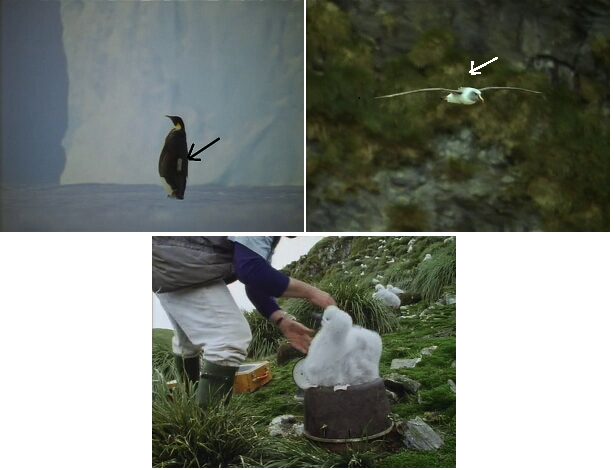
To keep track of where the birds go they are fitted with a radio transmitter (seen above for a penguin and an albatross). In the case of the penguin an arrow points it out because the white spot might otherwise be mistaken for some unwelcome blur. The transmitter for the albatross is pointed out by a white arrow because it is practically invisible, looks like a blur but this actually is the transmitter. The bottom snapshot shows the chick being put on an artificial nest that is actually a scale.
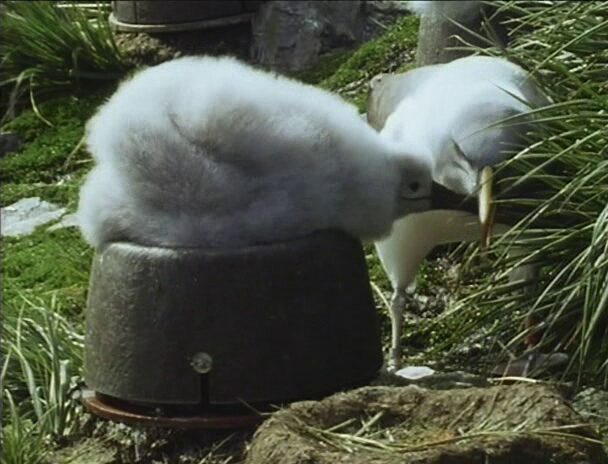
When the adult returns from the sea the scientists know exactly where it was and how much food it is giving the the chick. The artificial nest is on top of a scale that transmits data every few minutes to a scientist nearby (17’05). This helps the team monitoring their progress.
Camerawork, selected sequence
Usually when filming dangerous animals a protective cage or a remote camera is used

A protective cage being assembled before it is lowered into a hole to film penguins. Where you find penguins you should also expect their predators, leopard seals or killer whales (orcas). On the right there is a remote camera right next to the penguins.
But some cameramen wanted to be more “adventurous” and film leopard seals without this protection.
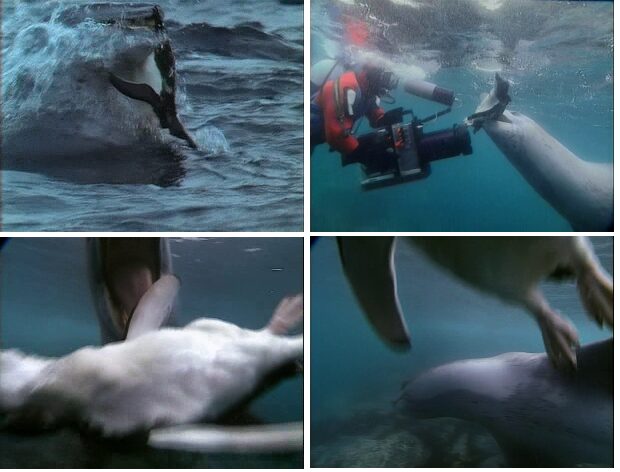
A leopard seal catches a penguin (top left) and offers it to the cameraman (top right). Both of these are filmed by the second cameraman. Bottom images are filmed by the cameraman in view above. The seal (bottom left) gives the prey to the cameraman and then swims away as the penguin drifts upwards (bottom right).
Attenborough’s final words (taken from the subtitles):
“It’s still less than a century since the first man set foot on the Antarctic continent, yet today, hundreds of scientists live and work here, winter and summer.
Increasing numbers of tourists arrive and, every year, modern technologies make it increasingly easy for people to survive here. Yet there are still very few footsteps in the Antarctic snow. Mining has been banned for a further 50 years and the Antarctic Treaty remains relatively effective.
At a time when it’s possible for 30 people to stand on the top of Everest in one day.
Antarctica remains a remote, lonely and desolate continent, a place where it’s possible to see the splendours and immensities of the natural world at its most dramatic, and to witness them almost exactly as they were long, long before human beings arrived on this planet.
Long may it remain so.”